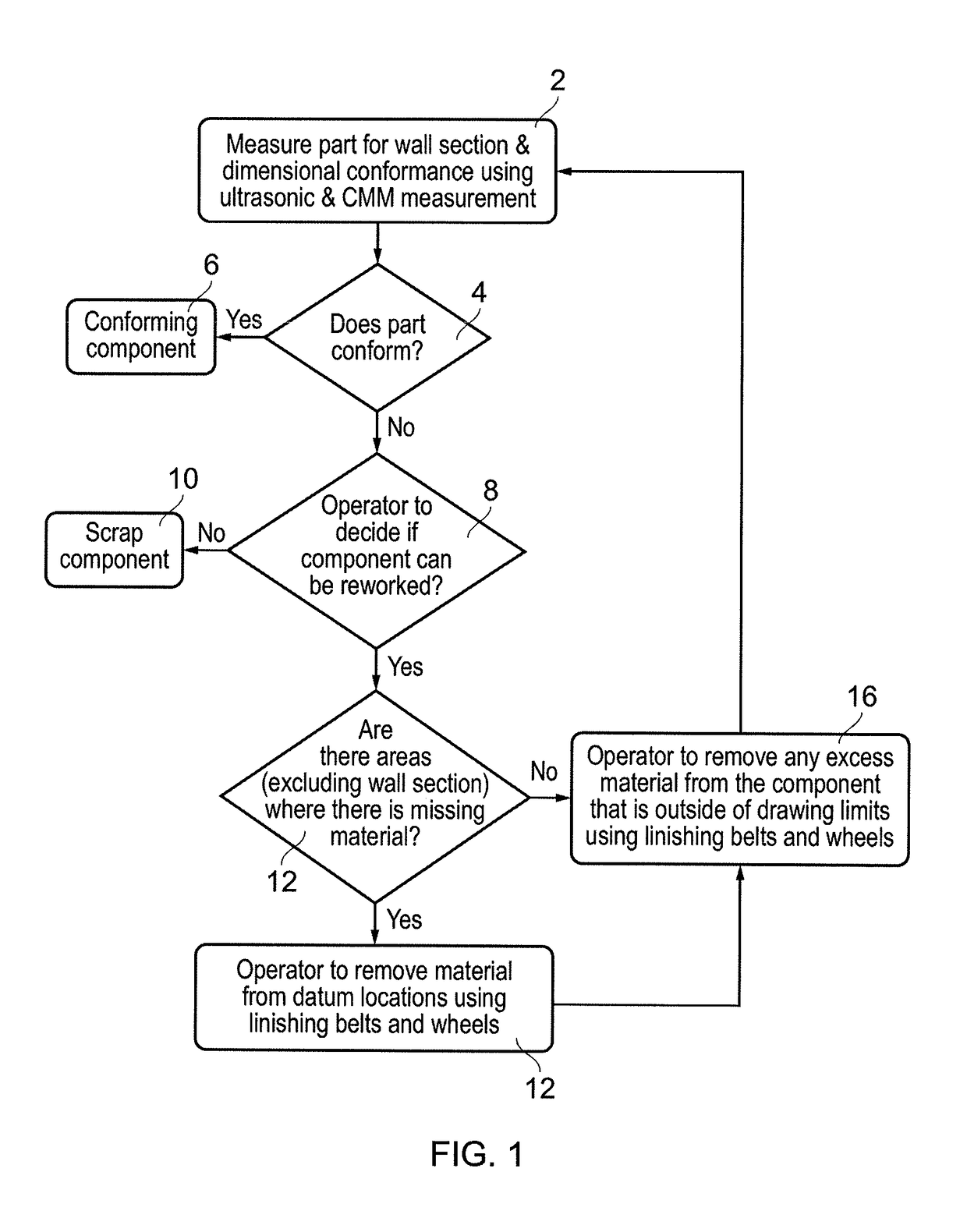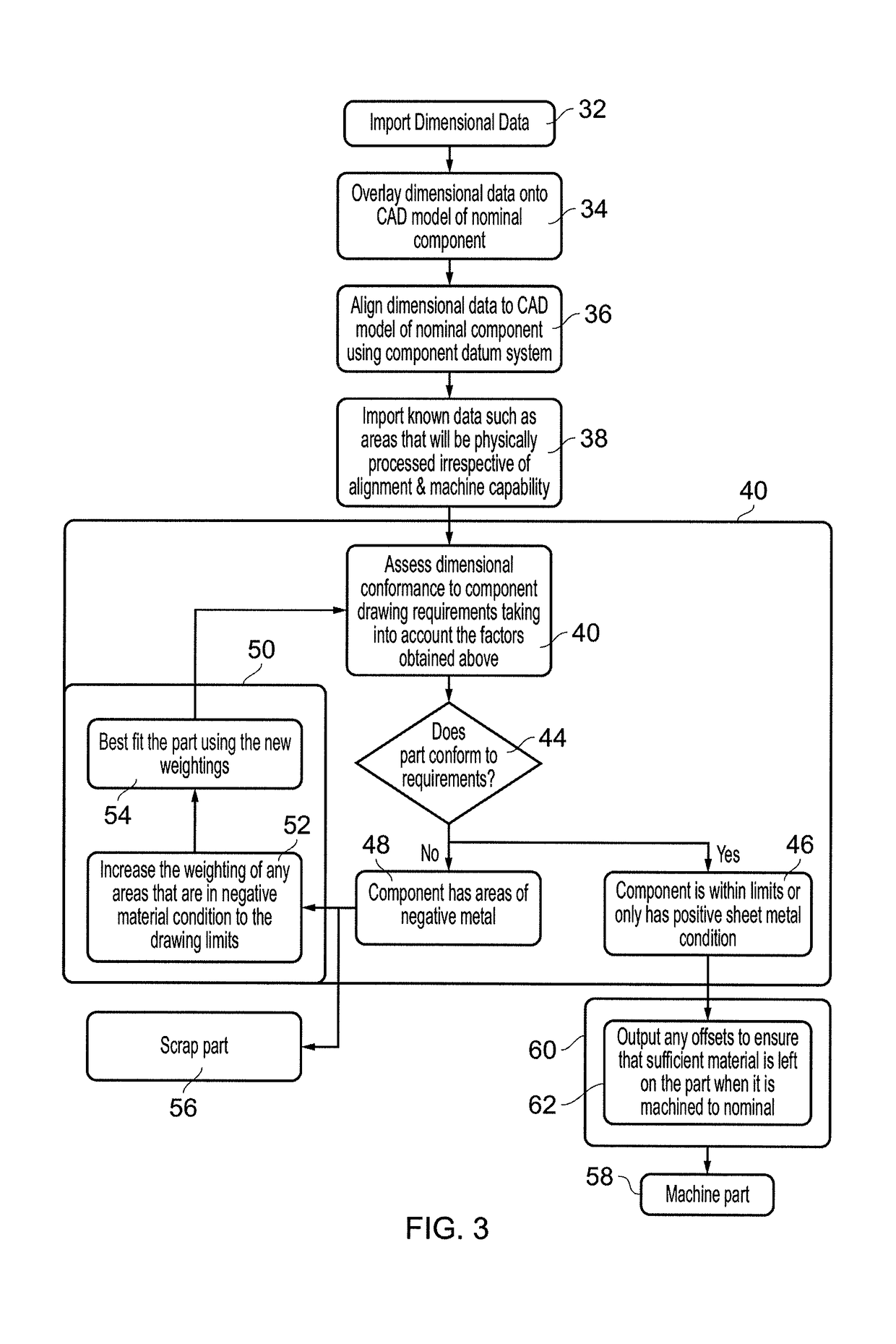Virtual component alignment
a component and virtual technology, applied in the field of virtual alignment systems, can solve the problems of missing, or ‘negative’, material, parts that would otherwise be scrapped, and the dimensional variation of the technique can exceed the drawing specifications of the components, so as to reduce the variability of the process, increase the dimensional capability at the operation, and reduce the rework at the operation.
- Summary
- Abstract
- Description
- Claims
- Application Information
AI Technical Summary
Benefits of technology
Problems solved by technology
Method used
Image
Examples
Embodiment Construction
[0051]The current, manual, inspection and reworking process is illustrated in the process flow diagram of FIG. 1. Once a part has been carefully measured using, for example, ultrasonic and CMM measurement 2, it is checked for conformity with the drawings 4. If it is found to conform, then it is simply sent for finishing 6. If, on the other hand, the part is found not to conform with the drawings, then it is left to the operator to decide, using their experience, expertise and judgement, whether or not the part can be salvaged by reworking 8.
[0052]If, in the view of the operator, the component cannot be salvaged, then it is simply scrapped 10. If the operator is of the opinion that reworking of the component is possible, then they will proceed to carefully remove material from the component. If there are areas where material is ‘missing’, compared with the drawings 12, then the operator will first remove material specifically from the datum locations 14, and then more generally from ...
PUM
 Login to View More
Login to View More Abstract
Description
Claims
Application Information
 Login to View More
Login to View More - R&D
- Intellectual Property
- Life Sciences
- Materials
- Tech Scout
- Unparalleled Data Quality
- Higher Quality Content
- 60% Fewer Hallucinations
Browse by: Latest US Patents, China's latest patents, Technical Efficacy Thesaurus, Application Domain, Technology Topic, Popular Technical Reports.
© 2025 PatSnap. All rights reserved.Legal|Privacy policy|Modern Slavery Act Transparency Statement|Sitemap|About US| Contact US: help@patsnap.com



